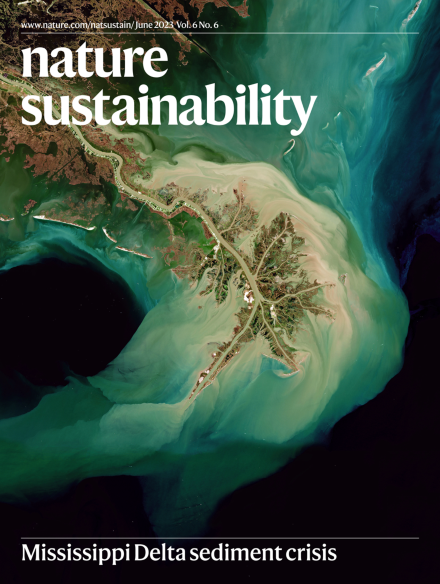Sustainable land use and viability of biojet fuels
IF 27.1
1区 环境科学与生态学
Q1 ENVIRONMENTAL SCIENCES
引用次数: 0
Abstract
Decarbonizing aviation requires, among other strategies, use of low-carbon liquid fuels, since electrified propulsion of large aircraft is not yet viable. However, commercialization of such ‘sustainable aviation fuels’ is lagging due to uncertainty about their potential. Here, we integrate land-use assessment, hydroclimate and ecosystem modelling and economic optimization in a systems framework to better characterize the biojet-fuel potential of cellulosic feedstocks. Planting 23.2 Mha of marginal agricultural lands in the United States—roughly the land area of Wyoming—with the grass miscanthus satisfies the country’s projected 2040 jet-fuel demand (30 billion gallons yr−1) at an average cost of US$4.1 gallon−1. Centred in the Midwest region, this marginal land base is a mix of croplands (7.2 Mha) and non-croplands (16 Mha), whose conversion into miscanthus delivers productive biomass, regional cooling without soil moisture loss and the lowest system greenhouse gas emissions (at US$50 tCO2e−1 carbon price). It is unsustainable to source the same quantity of miscanthus biomass through marginal land conversions in the Plains region. Sustainability considerations generate different land conversion patterns than expected from a purely economic vantage point. Integrated approaches, such as used here, are imperative to realistically evaluate the sustainability of bio-based alternative feedstocks. Aviation is a major contributor to climate change. This study assesses the potential of bioenergy crops planted in the US Midwest to meet projected US jet-fuel demand in 2040, finding that planting roughly 23.2 million hectares of marginal land with miscanthus would meet this need.

可持续土地利用和生物喷气燃料的可行性
航空业的去碳化除其他战略外,还需要使用低碳液体燃料,因为大型飞机的电力推进尚不可行。然而,由于这些 "可持续航空燃料 "的潜力尚不确定,其商业化进程十分滞后。在此,我们将土地利用评估、水文气候和生态系统建模以及经济优化整合到一个系统框架中,以更好地描述纤维素原料的生物喷气燃料潜力。在美国 2320 万公顷的贫瘠农业用地(约相当于怀俄明州的土地面积)上种植马齿苋,可以满足该国 2040 年的喷气燃料需求(每年 300 亿加仑),平均成本为 4.1 美元/加仑。以中西部地区为中心,这片贫瘠的土地由耕地(720 万公顷)和非耕地(1600 万公顷)混合而成,将其转化为马齿苋可提供高产生物质、不损失土壤水分的区域降温以及最低的系统温室气体排放(按 50 吨二氧化碳当量-1 的碳价格计算)。在平原地区,通过边际土地转换获得相同数量的马齿苋生物质是不可持续的。从可持续性角度考虑,土地转换模式与纯经济角度的预期不同。要对生物基替代原料的可持续性进行实际评估,就必须采用综合方法,如本文所使用的方法。航空是造成气候变化的主要因素。这项研究评估了在美国中西部种植生物能源作物以满足 2040 年美国喷气机燃料需求的潜力,发现在大约 2320 万公顷的贫瘠土地上种植马齿苋可满足这一需求。
本文章由计算机程序翻译,如有差异,请以英文原文为准。
求助全文
约1分钟内获得全文
求助全文
来源期刊

Nature Sustainability
Energy-Renewable Energy, Sustainability and the Environment
CiteScore
41.90
自引率
1.10%
发文量
159
期刊介绍:
Nature Sustainability aims to facilitate cross-disciplinary dialogues and bring together research fields that contribute to understanding how we organize our lives in a finite world and the impacts of our actions.
Nature Sustainability will not only publish fundamental research but also significant investigations into policies and solutions for ensuring human well-being now and in the future.Its ultimate goal is to address the greatest challenges of our time.
 求助内容:
求助内容: 应助结果提醒方式:
应助结果提醒方式:


